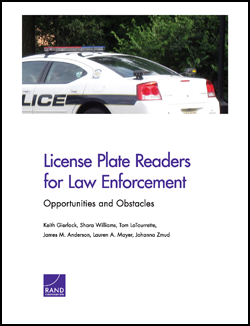
The research team concluded that LPR technology, although promoted initially as a tool to assist in identifying stolen vehicles, can be used in ways that agencies have only begun to discover. They have significant potential to increase the vehicle monitoring capabilities of an agency. The LPR system, which has portable and fixed units, can capture the image of a passing vehicle and compare its plates against official “hotlists” that show an array of infractions in which the vehicle with that license plate was involved or reasons why the vehicle is of interest to authorities. After an alert is issued, the officer can then investigate the license plate of interest and decide whether to take further action. The LPR system can also provide photos of the vehicle with the license plate of interest. This technology enables officers to capture images of exponentially more vehicles than any single officer can observe, and the information produced can be stored in databases, allowing investigators to analyze the data for more complex and open investigations of serious crimes. Concerns about privacy, however, have influenced law enforcement agencies to develop policies on how and with whom LPR data should be shared and how long the information might be kept. With help from system administrators with information technology backgrounds, agency staff must learn how to install, maintain, and repair cameras and computers and also determine whether these LPR systems are compatible with installations of other law enforcement agencies in the area. Recommendations are offered for improving the use of LPR technology.
